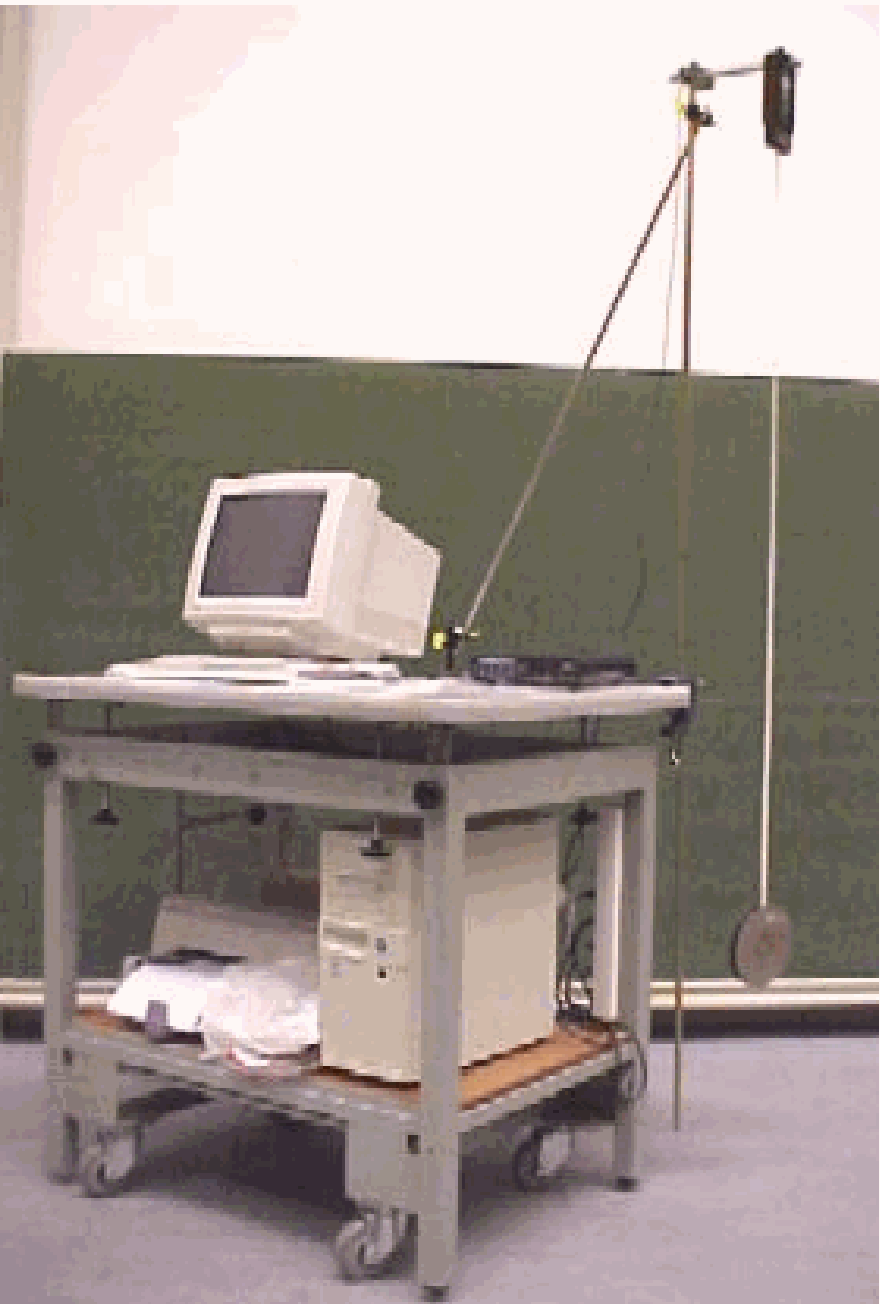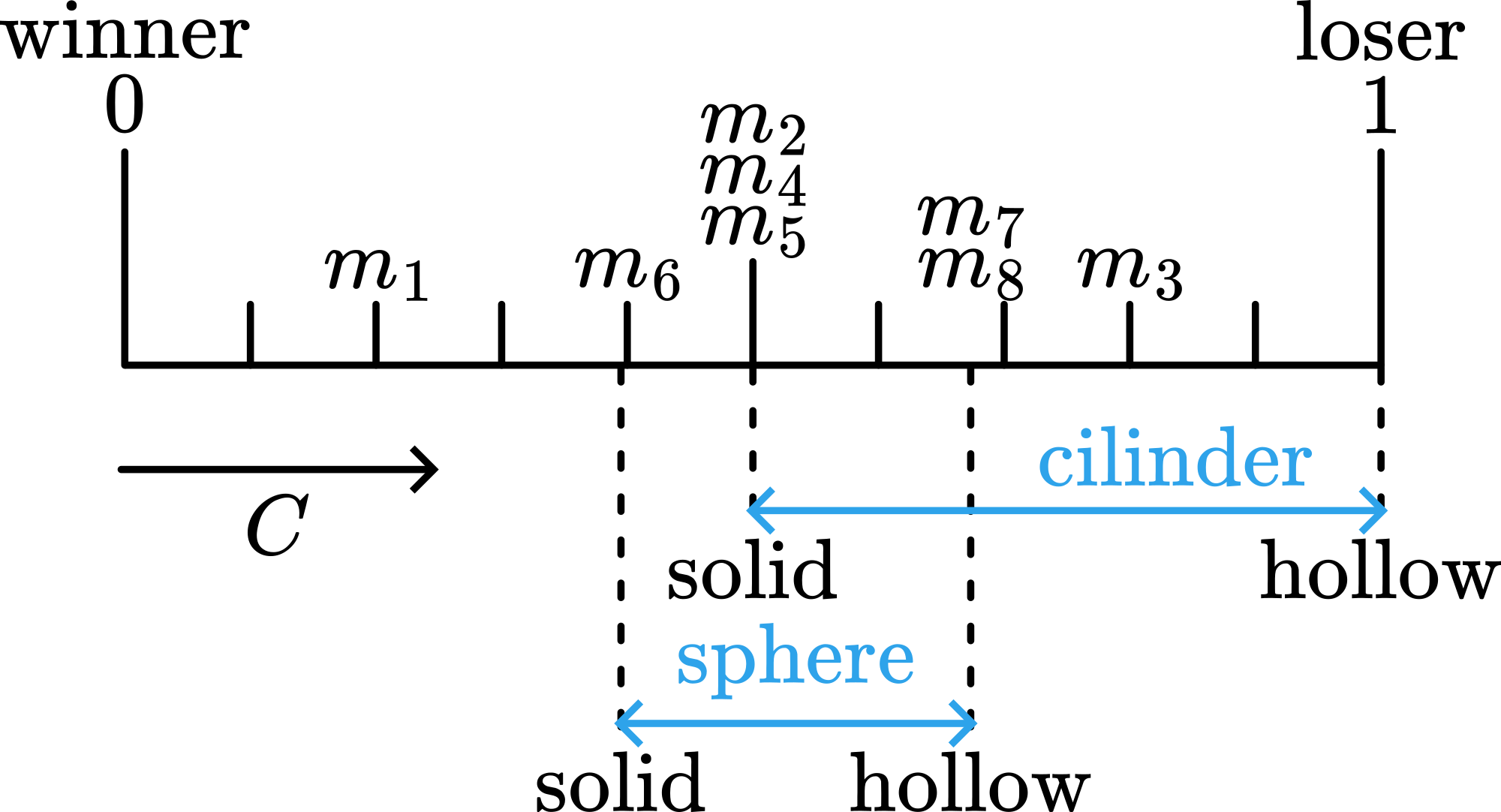05 Magnet Symmetry#
Aim#
To confirm Newton’s third law. To confirm conservation of angular momentum.
Subjects#
1H10 (Action and Reaction)
1N20 (Conservation of Linear Momentum)
1Q40 (Conservation of Angular Momentum)
Diagram#

Fig. 210 .#
Equipment#
Two small horseshoe magnets.
Transparency.
Overhead projector.
Presentation#
The axes of a rectangular coordinate system are drawn on the transparency. The transparency is placed on the overhead projector. The two horseshoe magnets are held together with like poles touching and positioned at the origin of the coordinate system. When releasing, the magnets travel a short distance. It can be observed that they always land in a symmetric pattern: symmetric in translation and rotation. (Both magnets need not be equally “strong”; usually, they are not equally “strong”. This can be shown by lifting a row of paperclips by both magnets: One magnet lifts more than the other.)
Explanation#
The symmetric pattern shows evidence of both a mutual force as well as a mutual torque. Flying apart into a symmetric configuration confirms Newton’s third law. That the magnets are not equally strong does not change the equality of action and reaction force magnitudes.
The observed equality in rotation can also be explained using conservation of angular momentum: No external forces are acting, so angular momentum, being zero at the beginning of the demonstration, has to remain zero during the movement of the magnets. The identical magnets turn the same angle in opposite directions.
Remarks#
Releasing the two magnets needs some practice (see Figure 211); both fingers need to move away from the magnets simultaneously.

Fig. 211 .#
Sources#
Ehrlich, R., Why Toast Lands Jelly-Side Down: Zen and the Art of Physics Demonstrations, pag. 35-36
Mansfield, M and O’Sullivan, C., Understanding physics, pag. 102
Young, H.D. and Freedman, R.A., University Physics
